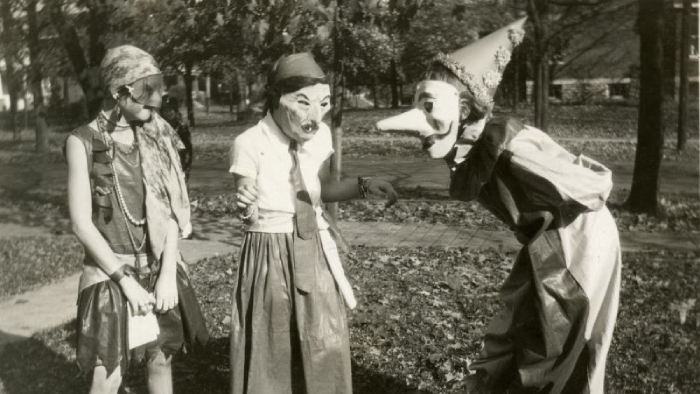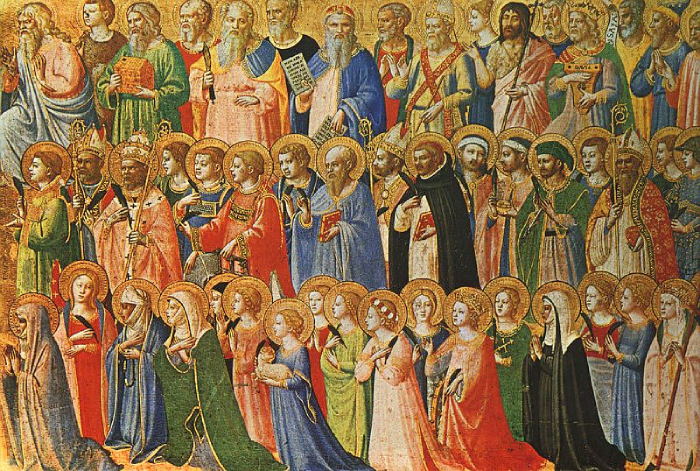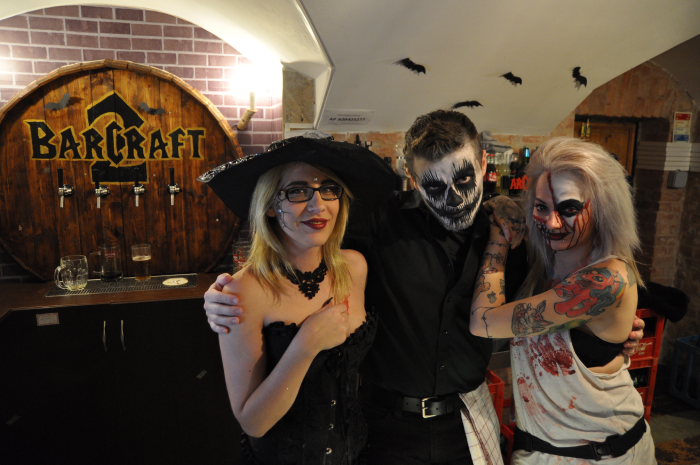Halloween, with its aura of mystique and mischief, is a time to transform the ordinary into the extraordinary, and the mundane into the magical. At the heart of this enchanting holiday lies a tradition that’s both playful and profound—the history of Halloween costumes.
Contents
Early Origins: Dressing for Samhain

Samhain marked the transition from the bountiful harvest season to the darker, colder days of winter. This seasonal shift was not only a matter of changing weather but also a time of profound spiritual significance in the history of Halloween costumes.
- Celtic Beliefs and Samhain: The Celts attuned to the rhythms of nature and believed in the interconnectedness of the living and spirit worlds. Samhain represented the end of the harvest and the beginning of winter, a period of both abundance and uncertainty.
- Thin Veil Between Worlds: What makes Samhain particularly intriguing for the history of costumes on Halloween is the belief that during this period, the boundary between the physical and spirit worlds became porous. This was rooted in the Celtic conviction that the spirits of the deceased, as well as other supernatural entities, could more easily traverse between realms.
- Costumes: The history of Halloween costumes originates in the practices of the Celts during Samhain. To protect themselves from malevolent spirits and to honor their ancestors, the Celts donned costumes, often fashioned from animal heads and skins. These costumes were not mere disguises; they were intended to confuse and ward off wandering spirits.
- Christian Influence and Costume Traditions: Samhain traditions began to merge with the Christian observance of All Saints’ Day on November 1st. The night before became known as All Hallows’ Eve, later shortened to Halloween.
The early origins of Halloween costumes, deeply rooted in the ancient Celtic beliefs and traditions of Samhain, illustrate the history of Halloween costumes, masks, and traditions. It was not merely about the history of dressing up for Halloween for the sake of entertainment; it was a practice deeply interwoven with spirituality and the belief in the thin veil between the living and the spirit world during this mystical time of year.
Christian Influence and Costume Traditions

The history of Halloween costumes took an intriguing turn with the influence of Christianity, particularly the introduction of All Saints’ Day. This Christian holiday played a significant role in shaping the early costume traditions associated with Halloween.
- Coexistence of Traditions: The Christian observance began to merge with the existing pagan traditions of Samhain, resulting in a coexistence of customs. Elements such as dressing up and lighting fires, inherited from Samhain, persisted. However, these elements now took on new meanings within the Christian context.
- Costume Traditions: The history of dressing up for Halloween endured, but it underwent a shift in focus. The costumes were no longer exclusively meant for warding off spirits. However, they often represented Christian figures, such as saints, angels, and even demons. This transition was a reflection of the merging of pagan and Christian customs. This is where the costumes now began to symbolize the spiritual realm.
- The Playful Transition: As the centuries passed, Halloween gradually evolved from the solemn and mystical traditions of Samhain into a more playful holiday. People began to dress as saints, angels, and occasionally even the devil. Dressing up like this is helpful for engaging in games, festivities, and communal celebrations.
The influence of All Saints’ Day on Halloween costumes represented a fascinating synthesis of spiritual and secular customs. This coexistence and blending of traditions set the stage for the creative and sometimes whimsical costume traditions.
Evolution in the History of Halloween customes

The history of Halloween costumes is a testament to the enduring power of creativity and the evolving dynamics of culture. As the history of costumes on Halloween moved through time, the costumes people donned underwent remarkable transformations, shaped by changing materials, themes, and cultural influences.
- Materials and Early Costumes: In the early days, Halloween costumes are from readily available materials. These included simple fabrics, animal skins, and even elements of nature like leaves and straw. Masks made from wood or animal hides were common.
- Themes and Symbolism: The evolution of costume traditions often carried deep symbolism. Early costumes were designed not only for disguise but also for protection from malevolent spirits and as a tradition of the history of Halloween costumes. Christian themes began to influence costume choices, with representations of saints, angels, and even the devil appearing. These costumes often held religious significance.
- Cultural Influences and Diversity: Halloween costumes have also become a canvas for cultural expression. In an increasingly diverse and interconnected world, costumes now reflect a multitude of cultural influences. The costumes we see today encompass a wide spectrum, from traditional and historical attire to representations of various global cultures.
To conclude, Halloween costumes have a rich history dating back to ancient Celtic Samhain, with influences from Christianity shaping early traditions and evolving over time. The history of Halloween and Halloween costumes is a reminder that dressing up is not just a fun activity. It’s a timeless tradition that bridges generations and connects us to the magical essence of Halloween.




